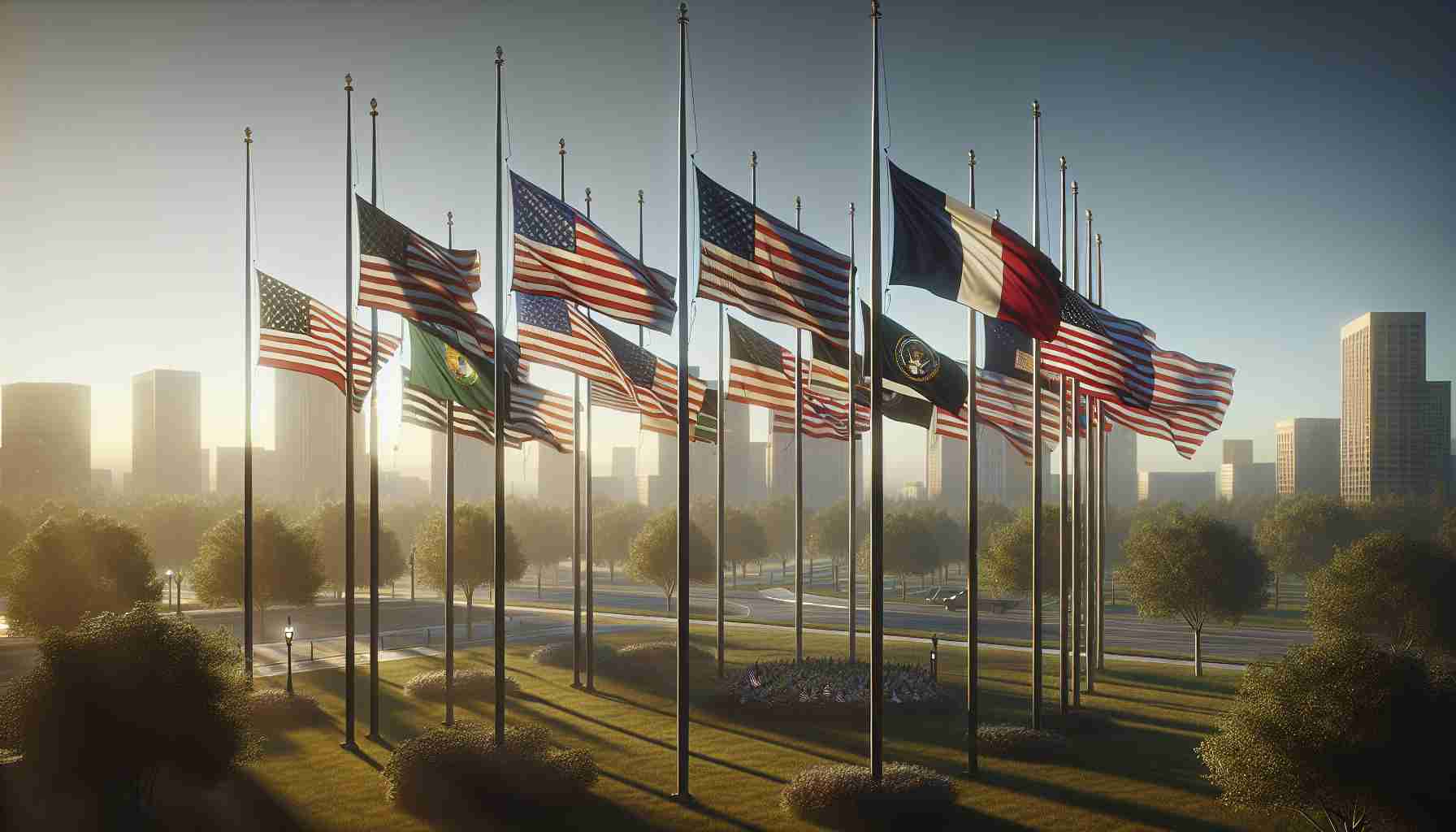- Today marks seven years since the Parkland tragedy at Marjory Stoneman Douglas High School, remembered through statewide commemorations in Florida.
- Seventeen lives were lost, represented by the names of the victims that continue to echo through the community.
- The site of the tragedy, now demolished, symbolizes a painful past that ignited calls for change and community resilience.
- Broward County Schools and South Florida communities turn grief into action through volunteering and acts of kindness.
- The day is a reminder of the enduring human spirit, transforming sorrow into a call for compassion and change.
- Flags at half-staff symbolize a commitment to healing and advocacy, with love and service as guiding principles.
A gentle breeze rustles the flags lowered in solemn commemoration. Today marks seven years since the tragic events at Marjory Stoneman Douglas High School in Parkland, Florida, and communities across the state unite in remembrance. The gravity of that day lingers, a scar upon the heart of the nation. Seventeen cherished souls were taken too soon, their lives extinguished by an act of unfathomable violence.
The names that echo through the halls of memory — Alyssa, Scott, Martin, Nicholas, Aaron, Jaime, Christopher, Luke, Cara, Gina, Joaquin, Alaina, Meadow, Helena, Alex, Carmen, and Peter — remind us of dreams unfulfilled and futures stolen.
The structure where hopes were crushed now exists only in memory, a symbol of a painful past that spurred fervent calls for change. As the building’s walls came down, a community vowed to raise its spirits and its voice. The specter of that day has etched resilience into its fabric.
In a powerful gesture of solidarity, Broward County Schools and communities throughout South Florida transform grief into action. Today becomes a beacon of service and love. Students flood volunteering initiatives, channeling their energies into acts of kindness, determined to light up the shadows cast on February 14, 2018.
The key takeaway today is the enduring spirit of humanity. Against the backdrop of remembrance, the community stands united, ensuring the legacy of those lost extends beyond sorrow into a clarion call for compassion and change. As flags flutter at half-staff, hearts remain firm in the belief that love and service can heal, one act at a time.
How Tragedy Transformed Into Advocacy: Lessons from Marjory Stoneman Douglas High School
How-To Steps & Life Hacks in Transforming Grief into Action
1. Organize Community Events: In the aftermath of a tragedy, organizing community events such as memorial services or days of service can unify people and foster healing.
2. Support Through Volunteering: Encourage volunteering as a way to honor victims by contributing positively to society. Acts of kindness can be a powerful way to heal collectively.
3. Advocate for Change: Channel grief into advocacy by participating in movements or campaigns that address the causes of a tragedy. Engage with policymakers and community leaders to push for reform.
4. Focus on Mental Health: Prioritize mental health resources for the community, providing counseling and support groups to help process grief and trauma.
5. Educational Workshops: Educate about conflict resolution, mental health awareness, and other relevant topics to empower and prevent future tragedies.
Real-World Use Cases
Communities across the U.S. have followed the example set by Marjory Stoneman Douglas, turning tragedy into advocacy. The “March for Our Lives” movement, sparked by students from the school, has organized rallies and engaged with lawmakers to promote stricter gun control policies.
Market Forecasts & Industry Trends
1. Rise in Demand for School Security Solutions: The school safety industry is expected to grow significantly, with increased investments in security technologies and mental health resources.
2. Educational Reforms: There’s growing momentum around educational reforms to include more comprehensive mental health and social-emotional learning curricula.
Reviews & Comparisons
Various programs aimed at transforming grief into action have received both praise and criticism. Some commend the proactive nature of movements such as “March for Our Lives,” while others debate the efficacy and focus of proposed changes.
Controversies & Limitations
The effectiveness of policy changes resulting from advocacy remains a point of contention. Critics argue about the balance between gun control and Second Amendment rights, while others emphasize the need for stronger mental health support networks.
Security & Sustainability
Investments in advanced security technologies, such as surveillance systems and emergency response solutions, are becoming crucial for educational institutions. Sustainability in fostering long-term community resilience requires continuous support and investment in mental health services.
Insights & Predictions
With increased awareness and advocacy, it is likely that schools will implement more comprehensive security and mental health strategies, leading to an integrated approach to student safety and well-being.
Pros & Cons Overview
Pros:
– Strengthened community resilience and unity.
– Increased awareness and advocacy for change.
– Improved safety measures and mental health resources.
Cons:
– Political and ideological divides on key issues.
– Challenges in implementing comprehensive changes quickly.
– Potential backlash from stakeholders resistant to change.
Actionable Recommendations
– Engage Locally: Support local advocacy groups and participate in community events to stay informed and involved.
– Promote Mental Health: Advocate for more robust mental health resources in schools and communities.
– Stay Informed: Follow credible sources and studies to understand the impact of community actions and policy changes.
For more information, visit: March for Our Lives and Common Sense Media.
By embracing acts of kindness and advocacy, communities can transcend tragedy, building a legacy of hope and change. The journey from grief to action paves a meaningful path forward, one step at a time.












